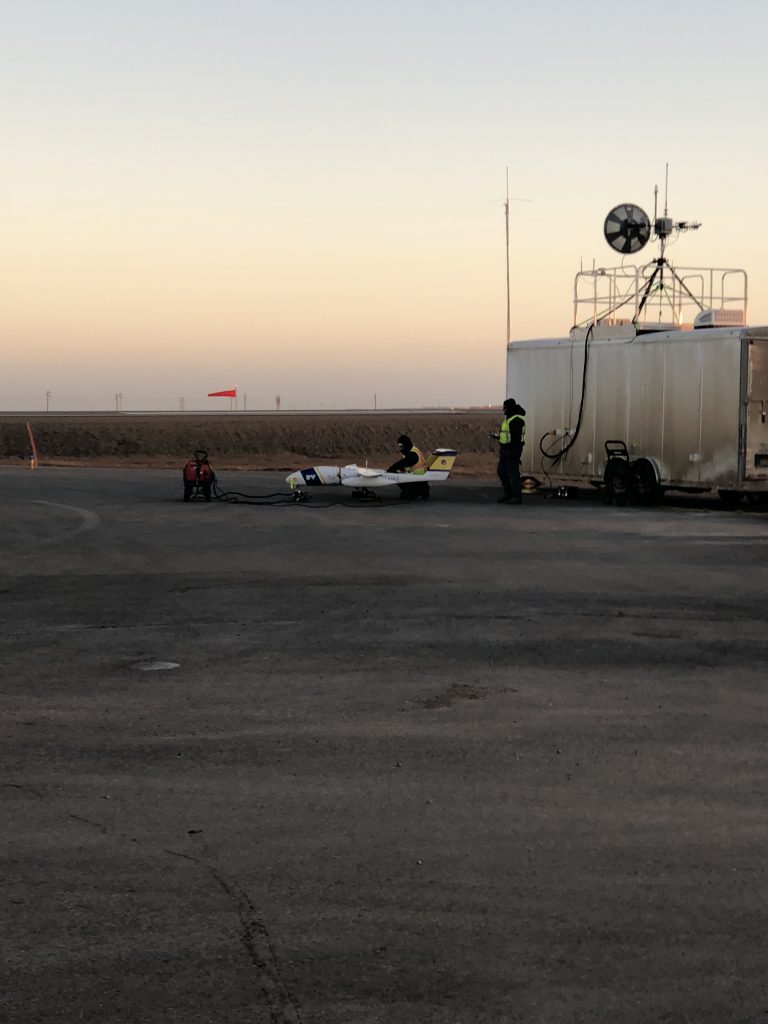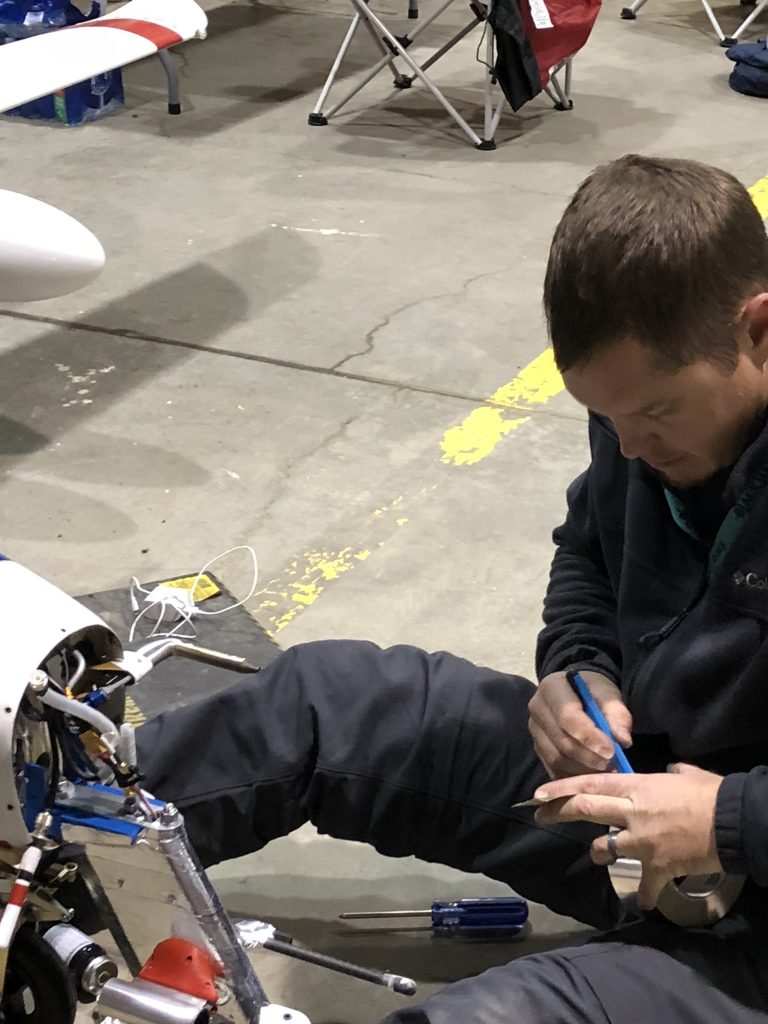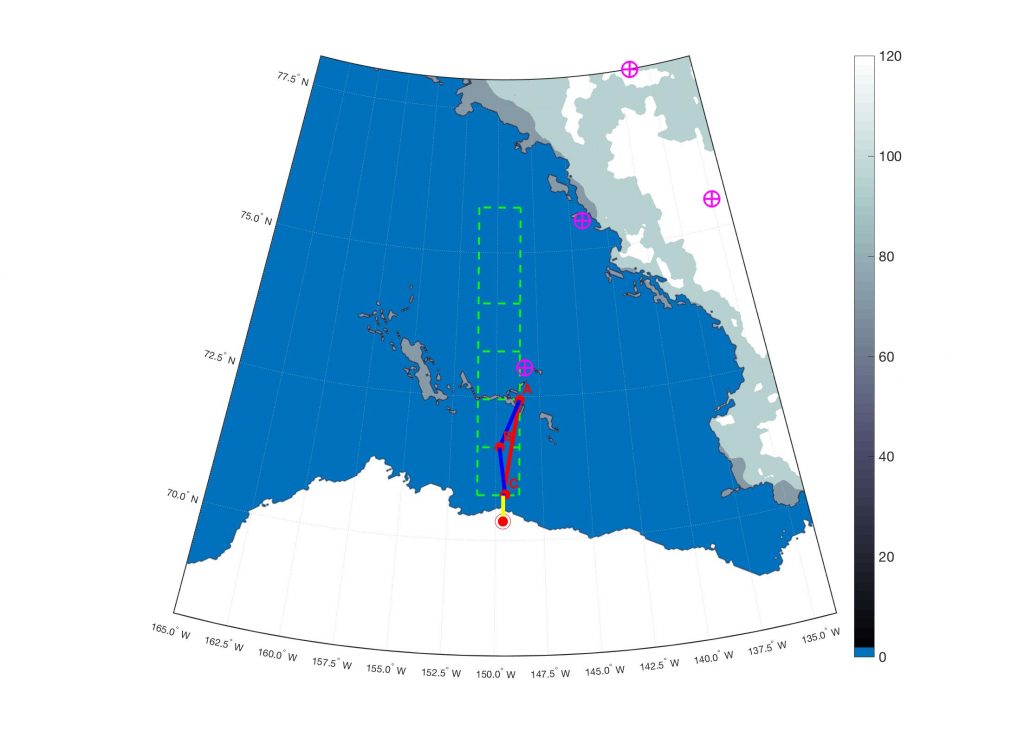After a couple of weeks of uncertainty, today was a very exciting day. Weather yesterday and today was good… Really good… Generally, clear skies and lighter winds, with some more cloud cover today (but at high altitude). Having had the teams in place and waiting for the winds to die down for over a week, everyone was excited to get SeaHunter in the air to finally start collecting some data!

SeaHunter on the tarmac at Kuparuk preparing for a test flight (photo Greg Foscue, UAF).

Chris working with UAF crew to install miniFlux on SeaHunter for initial test flights (photo Greg Foscue, UAF).
After some initial system test flights yesterday, we found that we had a small issue with the miniFlux payload and the way that it interacted with the SeaHunter. While I’ll spare you most of the details, one of SeaHunters other critical systems was causing the data collection on miniFlux to stop during flight. There was no way that the aircraft would fly without their system, so we had to figure out a solution to ensure that we’d collect data for the entire flight. With a lot of help from the University of Alaska-Fairbanks team, Chris was able to work to shield the sensor from this interference and further testing revealed that the problem had been mitigated!

The UAF team works to shield the miniFlux from interference using reflective tape (photo Greg Foscue, UAF).
With all systems “go”, an additional payload test flight was completed this morning. After confirming that everything worked the way it was supposed to, the team prepared the aircraft for its maiden science flight. This flight, which ended up being over four hours in duration, would send the aircraft over the Beaufort Sea to make measurements of the winds, temperature and humidity in that region. Specifically, we targeted a cluster of surface instruments making measurements of the weather there and of the ice and ocean in the area in order to provide additional context of the atmospheric state helping to drive the ocean state (and vise versa). I’m happy to report that the flight was very successful and we are now actively processing the data to take a good hard look at the environmental conditions over what will soon be newly forming sea ice.

The flight plan executed today by SeaHunter for our first official science mission of the campaign!
The next couple of days are forecast to be a bit less favorable weather-wise. While flights have not been completely ruled out, there is more uncertainty surrounding their feasibility. Stay tuned to hear more about future flights and to get some insight into data collected to date!
